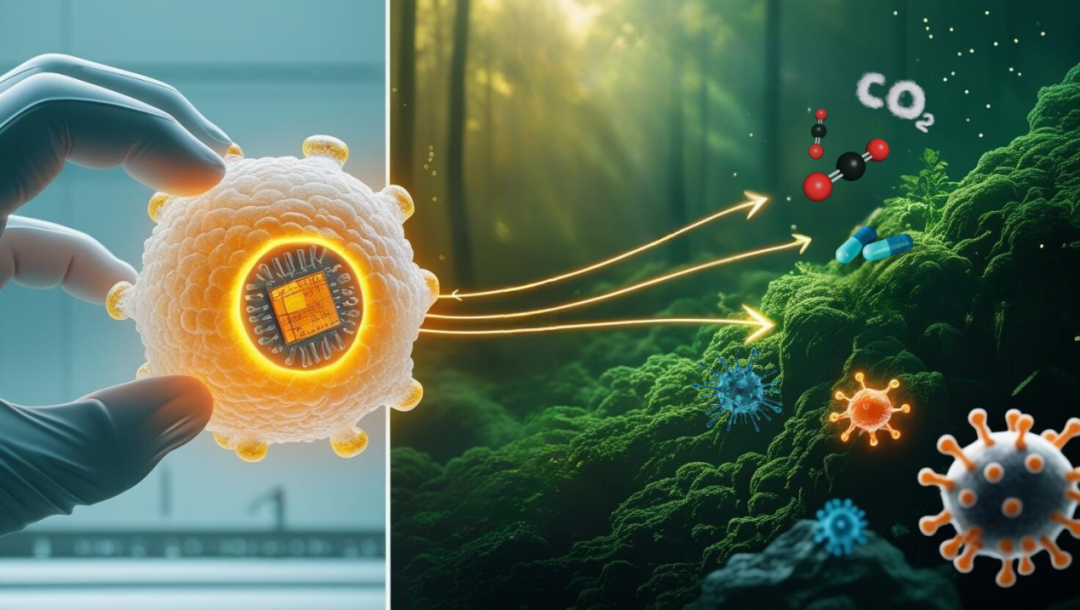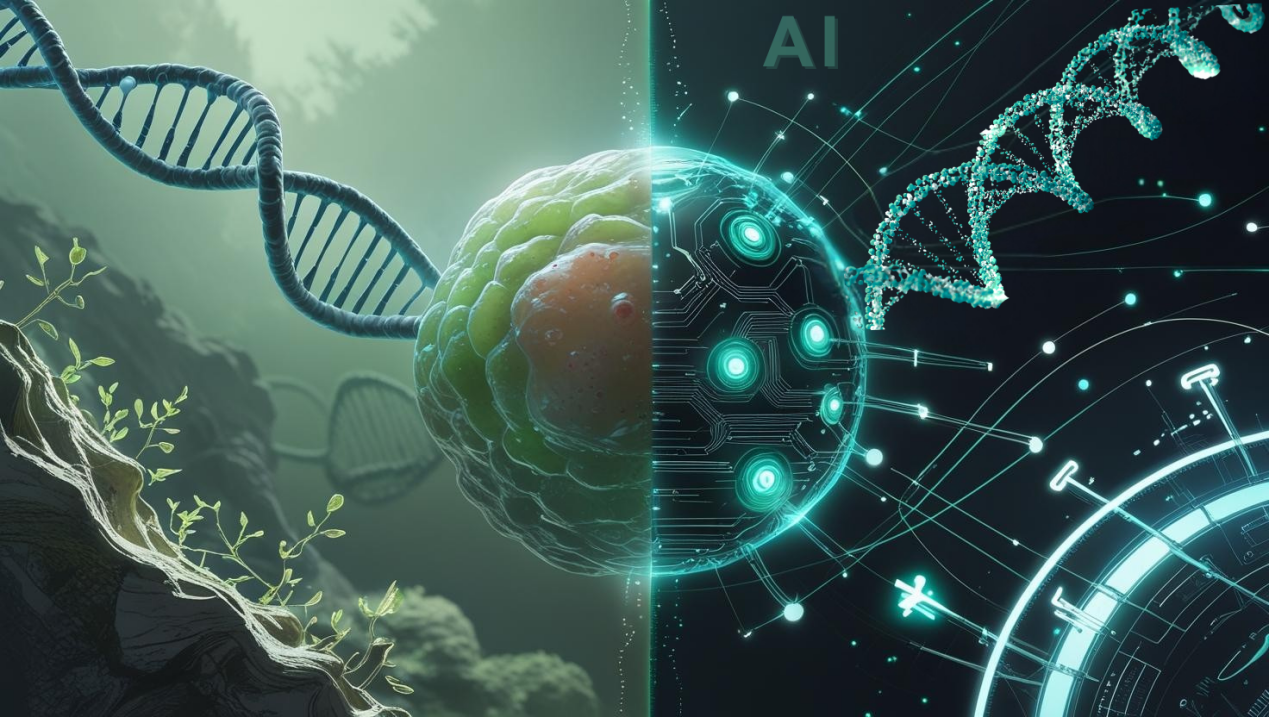From reading life to writing life—how modular design, new-to-nature organisms, and autonomous bio-systems are redefining what life can do.

Prologue
For centuries, the secrets of life were veiled in scientific uncertainty. Today, we stand at a new vantage point, able to look back with clarity and forward with confidence. Synthetic biology, a frontier discipline that crosses traditional boundaries, has become a key to both understanding and reshaping life. It is more than a technological leap; it’s a profound re-examination of what life is.
At its core, synthetic biology treats life as aprogrammable system. Using engineering principles, we can design and optimize genes, cells, and even whole organisms. From early gene editing to today’s artificial cell factories, the field offers an entirely new framework for redefining life. Just as computer science unlocked the information age, synthetic biology is poised to power asustainable future where cell factories augment or replace industrial lines and biology itself becomes a controllable, programmable material.
Let’s begin by “reading life” and step into the era of “writing life.”
Chapter 01
Biological Synthesis
– From Gene Editing to Modular Reconstruction
If genes are the language of life, gene editing is our bridge to converse with it. Over recent decades, genomics has advanced rapidly; reading, modifying, and recombining DNA has moved from science fiction into reality. But alteration is only the first step. The real challenge is re-architecting life’s building blocks to create entirely new functions.

From editing to design.
Synthetic biology empowers us to design life, not just discover it. From gene refactoring to engineered DNA modules, we now assemble standardized biological parts like Lego bricks, combining and tuning them to deliver predictable traits and functions.
Programmable cells as production platforms.
By precisely regulating intracellular genetic networks, we can endow cells with new abilities—manufacturing pharmaceuticals, degrading pollutants, or synthesizing advanced biomaterials. The rise of microbial factories means bacteria, yeast, and other microbes can replace segments of traditional chemistry with efficient, low-cost, lower-emission production. These redesigned organisms are true cell factories, enabling distributed manufacturing that addresses needs in energy, food, and medicine.
Case study: High-titer sandalwood oil via engineered yeast.
A team at the Tianjin Institute of Industrial Biotechnology (Chinese Academy of Sciences) overcame a cytochrome P450 bottleneck in santalol biosynthesis using a subcellular compartment engineering strategy. With peroxisomal surface display of P450 enzymes, they built a high-efficiency yeast cell factory. In a 5-liter fermenter, santalol titers reached 10.4 g/L, the highest reported to date—laying the groundwork for greener, lower-cost production of sandalwood oil. [1]
Formula: Life = Modules + Algorithm + Objective
We assemble modular parts, apply control logic, and optimize toward a target function.
Chapter02
Synthesized Biology
– From “Making Life” to “New Life”
What counts as “life” has long been debated. Traditional biology views life as the outcome of natural evolution; synthetic biology pushes the boundary further. We are not only making life, we are creating new life. These organisms are not clones; they express unprecedented functions.
Carbon-absorbing microalgae.
Researchers at ICGEB introduced LCIA and LCIB genes from Chlamydomonas reinhardtii into Parachlorella kessleri-I, building a strain with a carbon-concentrating mechanism (CCM). The engineered algae grew in high CO₂, with about 2× the growth rate of wild type, 1.5× higher carbon-capture enzyme activity, and 2.5× lipid production—pointing to a powerful route for industrial carbon capture and utilization. [2]
- CO₂-capturing algae: Engineered algal cells that absorb carbon dioxide more efficiently can combat global warming while enabling novel carbon-utilization pathways.
- Antiviral cells: Through gene editing, cells can be built to sense, withstand, and even neutralize viral threats—offering a potential tool against future pandemics.
- Intelligent delivery systems: Programmed microbes or cells can carry and release therapeutics with high precision in targeted tissues, improving efficacy and reducing side effects compared with conventional drug delivery.

These new life forms are changing how we produce goods and how we define life. They are not replicas but functional redesigns, seeds for new species, new technologies, and potentially new civilizations.
Chapter 03
Autonomous Synthesis
– The Dawn of Life’s Self-Evolution
The frontier is shifting from creating organisms to enabling synthetic entities that help synthesize and optimize life itself. Life begins to move beyond natural selection alone and into an era of artificial evolution.
AI-informed “smart cells.”
By combining artificial intelligence with genetic engineering, we can design cells that sense, decide, and act, autonomously adapting to changing environments. These cells can self-optimize based on external signals, and in some designs, perform limited self-repair or functional enhancement without external intervention.

A team led by Prof. Mingqi Xie at ETH Zurich developed “smart cell” systems that integrate diagnostics with on-demand therapeutic production inside the cell—demonstrating automated diagnosis and therapy particularly suited to metabolic diseases. By editing mammalian gene-expression networks, the team enabled functions such asautomatic synthesis of insulin-like therapeutic proteins for closed-loop treatment. [3]
Automated pathway design.
With machine learning and computational biology, genetic pathway design can be proposed, scored, and optimized in silico, reducing trial-and-error and accelerating time-to-strain.
Self-replication and functional iteration.
Under controlled conditions, engineered lineages can replicate and iteratively improve target functions, bringing aspects of artificial evolution to biomanufacturing, medicine, and environmental remediation—sometimes surpassing the speed and efficiency of natural adaptation.
Looking Ahead
Synthetic biology is no longer just an academic field. It is a platform technology driving progress in health, materials, food, and climate. We stand at a historical inflection point: no longer mere observers of nature, but creators, refactors, and evolvers of living systems. The era of the “engineers of life” has arrived, and this is only the first step.
Reference
[ 1 ] Wang, D., Li, W., Ma, X., Li, R., Yang, T., Li, R.,... & Dai, Z. ( 2025 ). Enhanced Production of Santalols by Engineering the Cytochrome P450 Enzyme to the Peroxisomal Surface in Yeast. Journal of Agricultural Chemistry.
[ 2 ] Ghosh, S. ( 2024, October 10 ). Boosting algae 's carbon absorption.
[ 3 ] Xu Shan. ( 2020 ). 24-hour automatic diagnosis and treatment, ' smart cells ' want to move doctors into your body. West Lake University.
 DNA Synthesis
DNA Synthesis Vector Selection
Vector Selection Molecular Biology
Molecular Biology Oligo Synthesis
Oligo Synthesis RNA Synthesis
RNA Synthesis Variant Libraries
Variant Libraries Genome KO Library
Genome KO Library Oligo Pools
Oligo Pools Virus Packaging
Virus Packaging Gene Editing
Gene Editing Protein Expression
Protein Expression Antibody Services
Antibody Services Peptide Services
Peptide Services DNA Data Storage
DNA Data Storage Standard Oligo
Standard Oligo Standard Genome KO Libraries
Standard Genome KO Libraries Standard Genome KO Plasmid
Standard Genome KO Plasmid ProXpress
ProXpress Protein Products
Protein Products
























